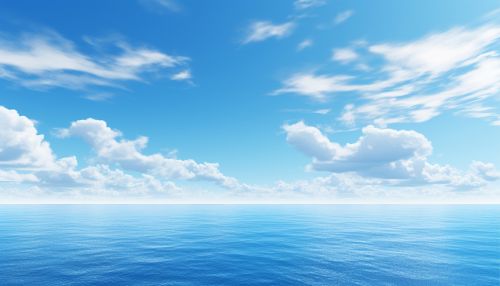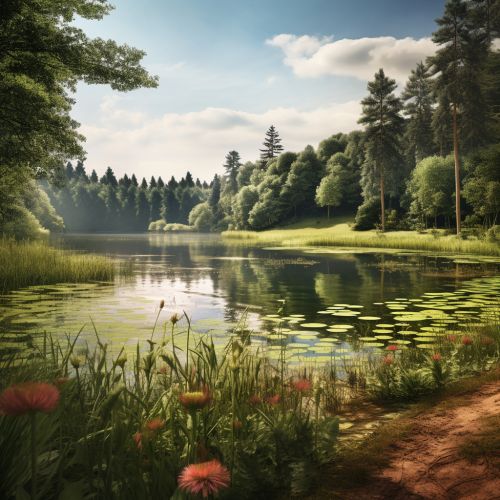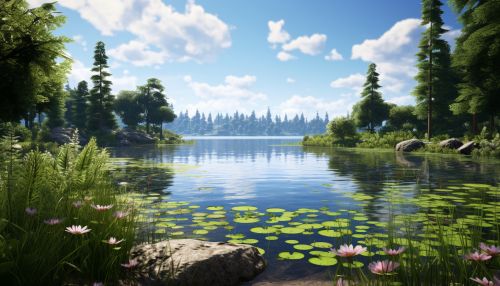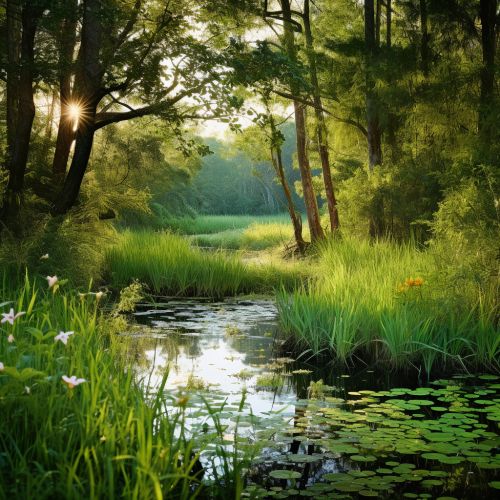Water bodies
Introduction
Water bodies are significant features of the Earth's hydrosphere and play a key role in the global water cycle and the Earth's climate system. They are diverse and can be classified into various types based on their size, location, and physical characteristics. These include oceans, seas, lakes, rivers, ponds, and wetlands among others. Each type of water body has unique characteristics and supports a variety of life forms, contributing to the planet's biodiversity.
Oceans
Oceans are the largest water bodies, covering about 71% of the Earth's surface. They are saltwater bodies and are interconnected, forming a global oceanic system. Oceans are divided into five major parts: the Atlantic, Pacific, Indian, Southern, and Arctic Oceans. They play a crucial role in regulating the Earth's climate by absorbing sunlight and redistributing heat around the planet through ocean currents.


Seas
Seas are smaller than oceans and are partially enclosed by land. They are also saltwater bodies and are often connected to oceans. Seas can be found in various parts of the world and have different names based on their location. For example, the Mediterranean Sea is located between Europe, Asia, and Africa, while the Caribbean Sea is found in the western Atlantic Ocean.
Lakes
Lakes are inland water bodies that are typically freshwater, although there are also saltwater lakes. They are usually formed by various geological processes such as tectonic activity, glaciation, and erosion. Lakes are home to a variety of plant and animal species and are often used by humans for recreational activities like fishing and boating.


Rivers
Rivers are flowing water bodies that usually originate from mountains or hills and flow into seas or oceans. They are primarily freshwater bodies and are a vital source of water for humans, animals, and plants. Rivers also play a significant role in shaping the Earth's landscape through processes like erosion and deposition.
Ponds
Ponds are small, shallow water bodies that are usually freshwater. They are typically formed by a variety of natural processes, including rainfall, melting snow, and groundwater seepage. Ponds support a diverse range of plant and animal life, including various types of fish, amphibians, and waterfowl.
Wetlands
Wetlands are areas where water covers the soil or is present either at or near the surface of the soil all year or for varying periods of time during the year. They include marshes, swamps, and bogs. Wetlands are among the most productive ecosystems in the world and provide habitat for a wide range of plant and animal species.


Importance of Water Bodies
Water bodies are essential for life on Earth. They provide habitat for a wide range of species, contribute to biodiversity, and play a crucial role in the Earth's climate system. They also provide resources for human use, including water for drinking and irrigation, fish for food, and opportunities for recreation and tourism.
Threats to Water Bodies
Despite their importance, water bodies around the world are under threat from various human activities. These include pollution, overfishing, climate change, and habitat destruction. These threats can lead to a loss of biodiversity, degradation of water quality, and disruption of ecosystem services.
Conservation of Water Bodies
Conservation of water bodies is crucial to maintain their ecological integrity and to ensure the continued provision of their services. This can be achieved through various strategies, including pollution control, sustainable fishing practices, habitat restoration, and the establishment of protected areas.
